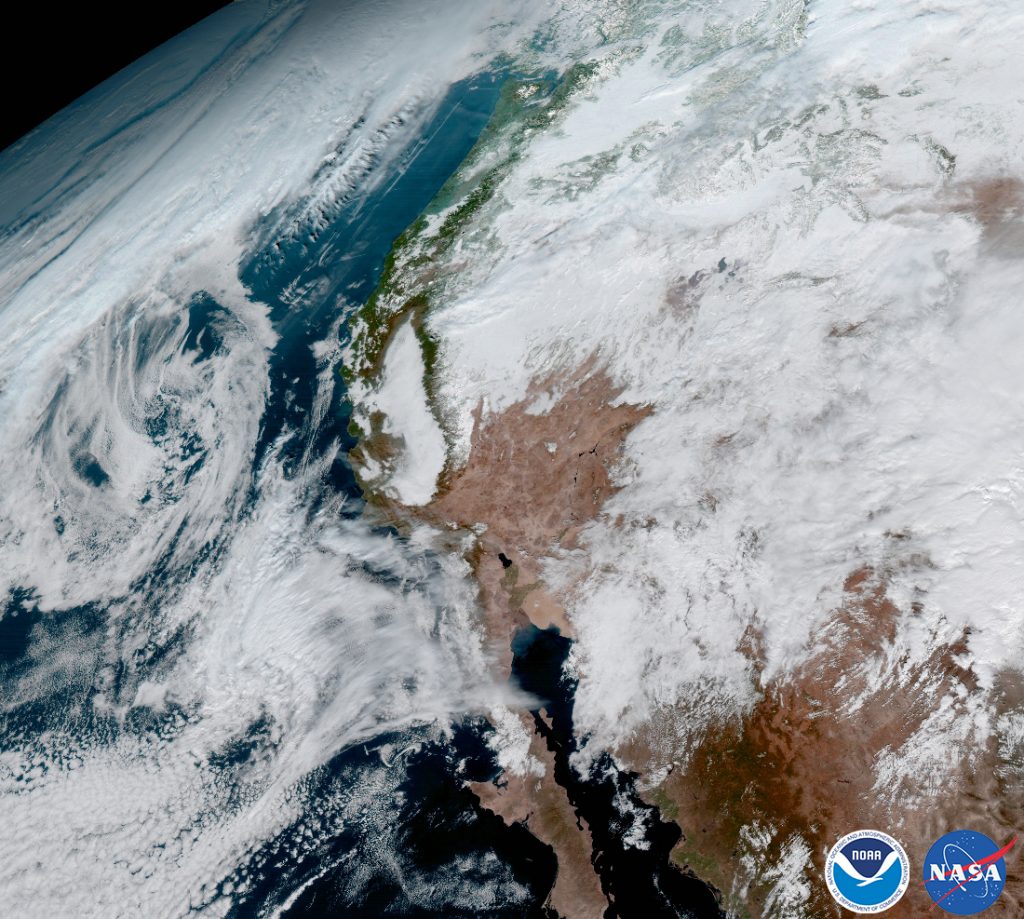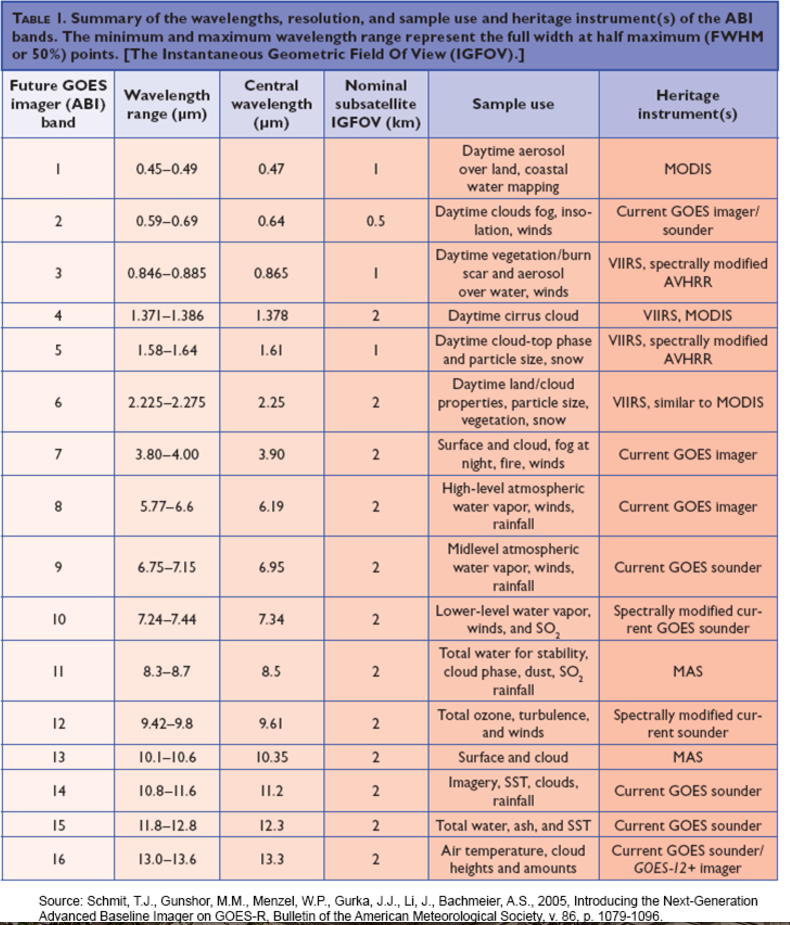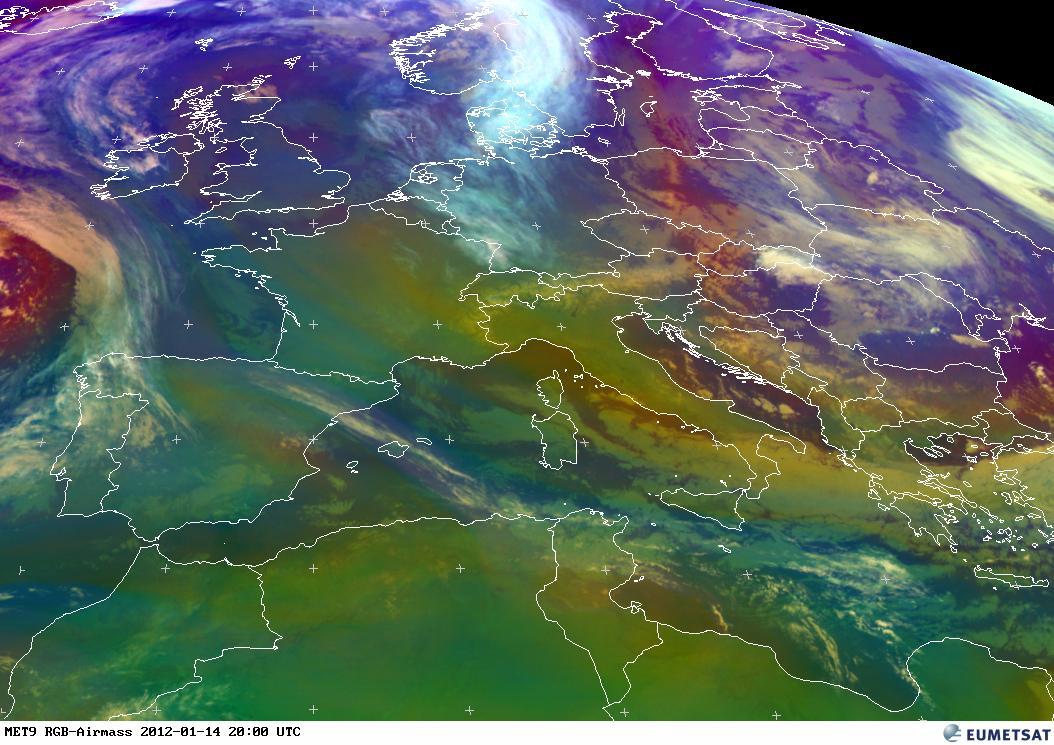26 January 2017
All The Light We Cannot See
Posted by Dan Satterfield
One image in 16 different wavelengths of light from NOAA’s new weather satellite GOES-16 (GOES-R at launch).
The upper left is the blue visible light wavelength. Next is Red. Next is near IR, not visible to our eyes, but very sensitive to vegetation. This near-IR channel is very valuable because you can do some software tricks and use it as a green channel to get a colour image.
The other are IR bands that are sensitive to temperatures and water vapour at different levels of the atmosphere.
These channels can be combined to make an image that shows water clouds, ice clouds and even airmasses! (4th pic from EUMETSAT).
All the light we cannot see and the small part of the electromagnetic spectrum we can see tells us so much about our planet and our universe. It’s actually told us EVERYTHING we know about our Universe from how old it is to what it’s made of. With perhaps the pesky exception of one thing. You can find out about that by reading this great book. On the other hand, the light told us it was there. That and Isaac Newton.






 Dan Satterfield has worked as an on air meteorologist for 32 years in Oklahoma, Florida and Alabama. Forecasting weather is Dan's job, but all of Earth Science is his passion. This journal is where Dan writes about things he has too little time for on air. Dan blogs about peer-reviewed Earth science for Junior High level audiences and up.
Dan Satterfield has worked as an on air meteorologist for 32 years in Oklahoma, Florida and Alabama. Forecasting weather is Dan's job, but all of Earth Science is his passion. This journal is where Dan writes about things he has too little time for on air. Dan blogs about peer-reviewed Earth science for Junior High level audiences and up.